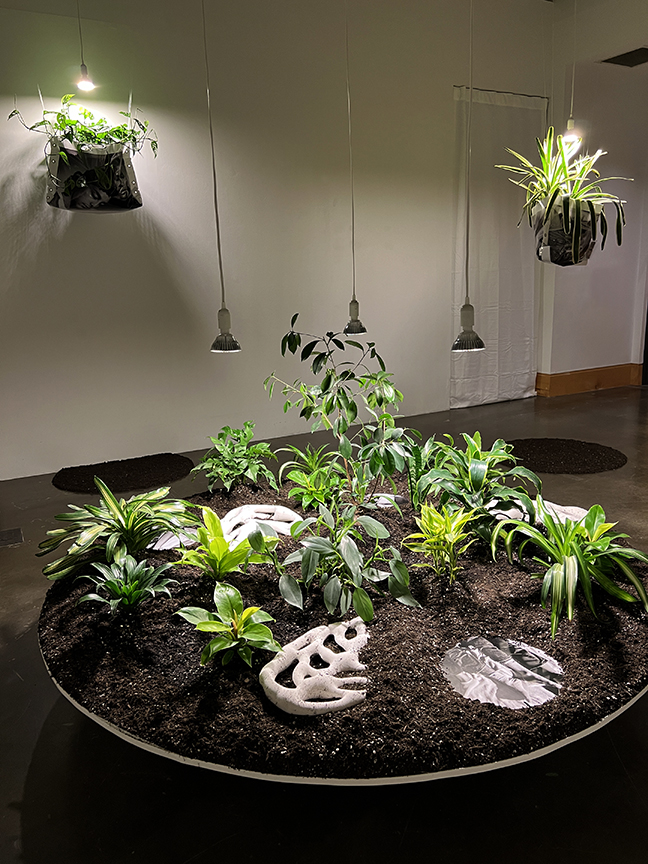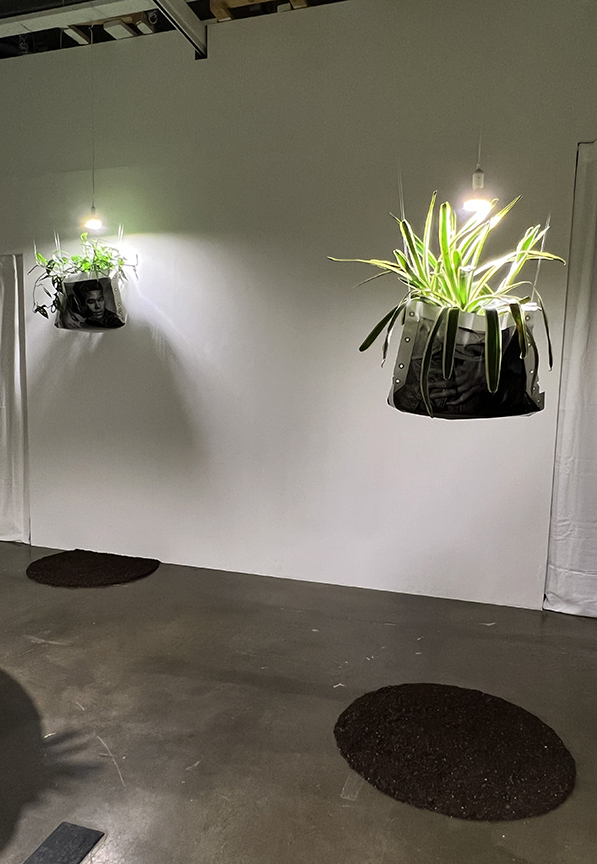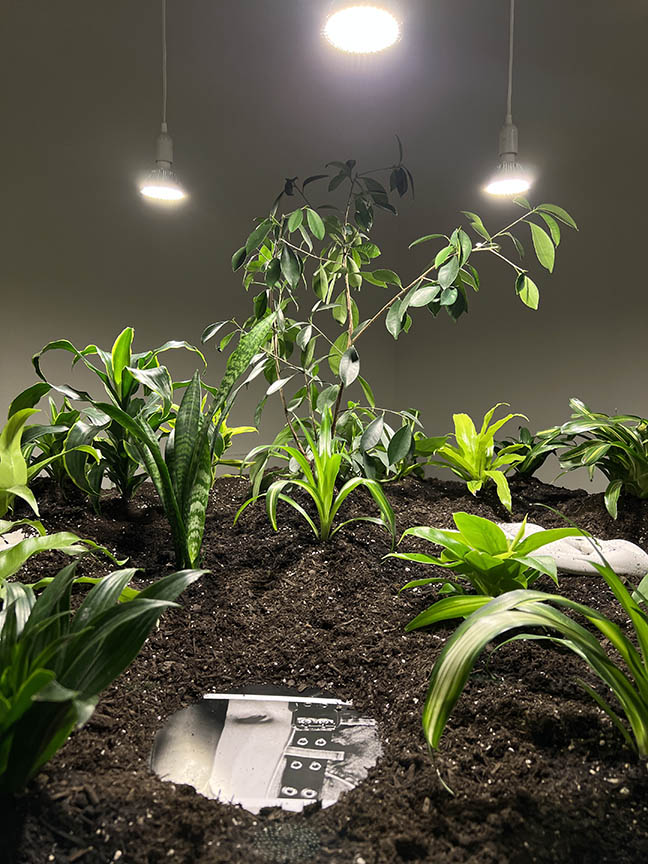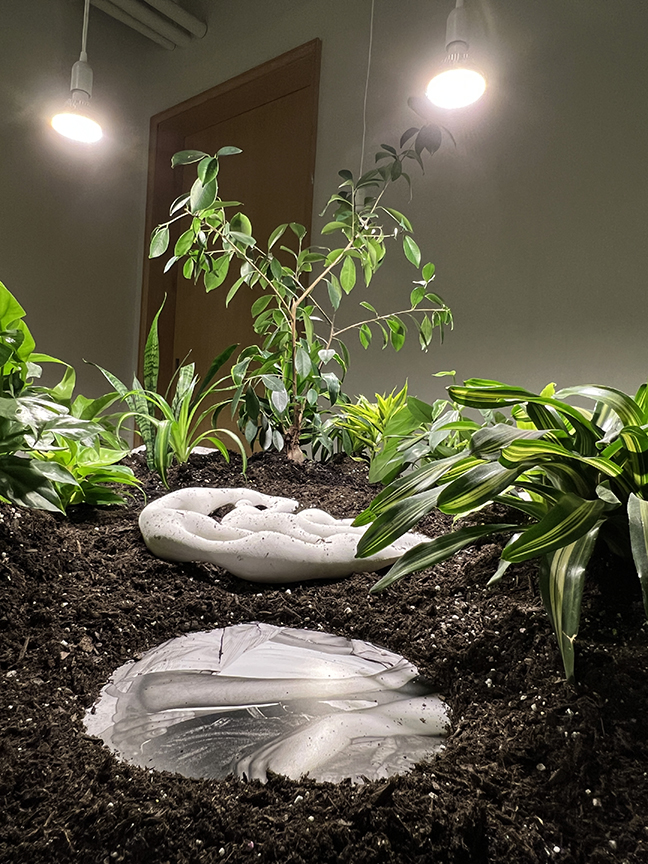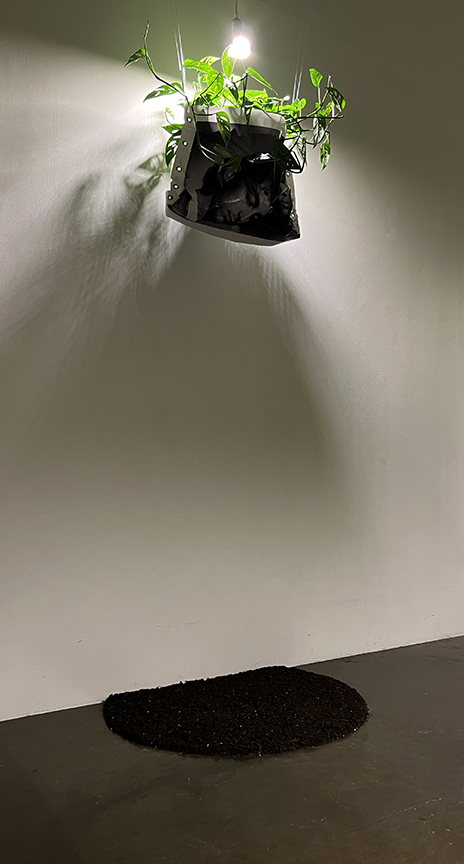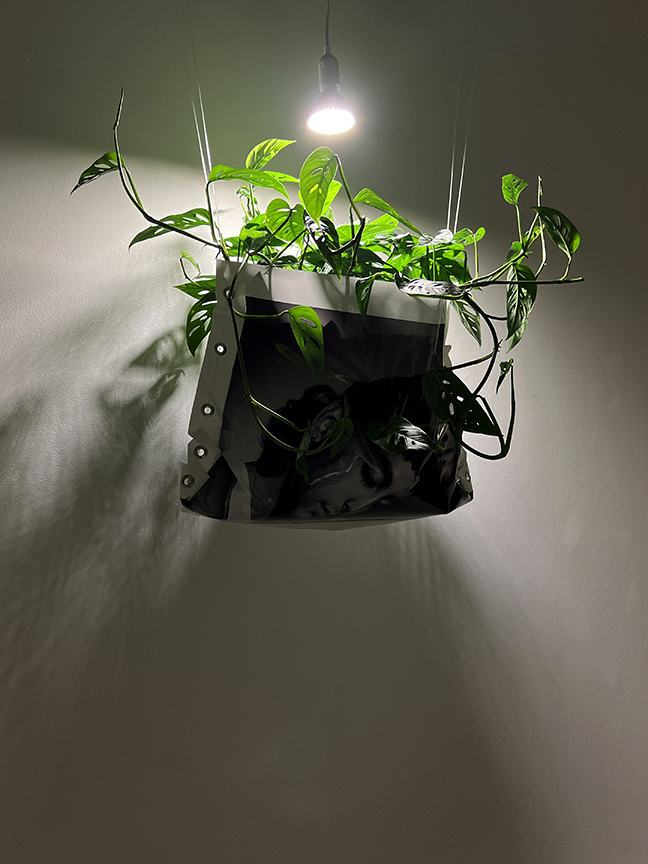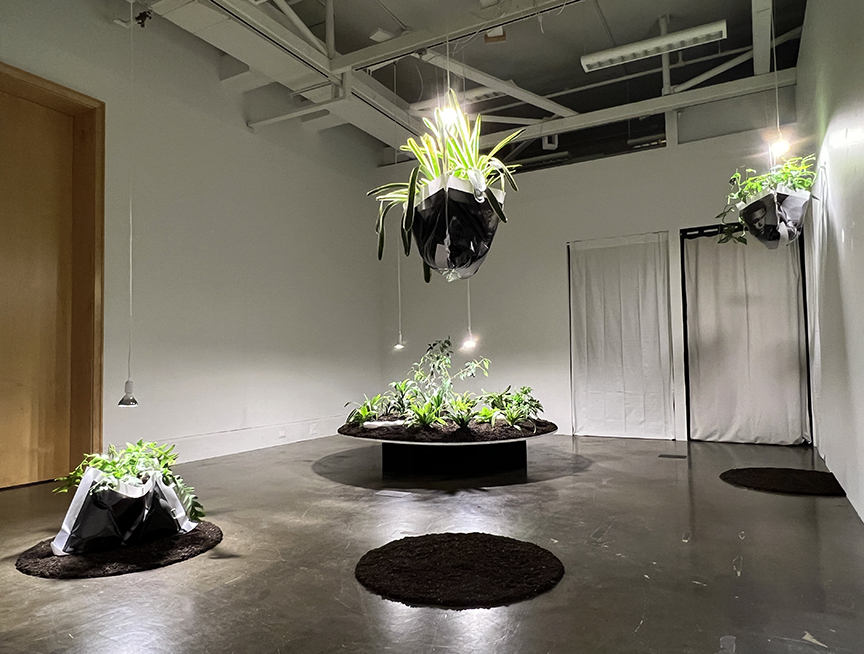Queer Bodies – Adam Alwan
Statement
As Audrey Hepburn says, “to plant a garden is to believe in tomorrow,” and to care for one is to nourish hope for the future of humanity. Inspired by my time with my grandmother in our garden, I use mediums from childhood as vehicles to address queerness as an adult. Using a multidisciplinary approach that includes nature, photography, and sculpture, my work engages the audience in the ecological and queer humanitarian crisis.
In my work, the photograph becomes the home, the site, and the root of growth. My photography captures vulnerable moments in the daily life of queer identities and relationships. By incorporating these photographs with living houseplants, seeds, and soil, I create a sense of vitality and attentiveness that speaks to our innate desire for growth and renewal. Watering these plants is simultaneously an act of caring for queer people, thus amplifying the profound issues facing the queer community.
In Garden of Transformation, I create a tangible oasis that invites the viewer to tend to and water the plants and the underlying queer relationships beneath them. I share my experience as a queer man, highlighting the delicate side of the queer narrative and the necessity of care. With this body of work, I want to create a space of progressive awareness and inclusivity rooted in tenderness and empathy, evoking the need for growth and action. My photography amplifies social and political causes by establishing connections and togetherness through intimate photographs, posing questions concerning connections between ourselves and nature.
Queer Sanctuaries is a series of mixed-media sculptures built within photographs of queer people and relationships. Each photograph used in these works serves as the sculptural foundation of a pot or a planter, thus becoming a home for plants to flourish. Just as plants continue to grow amidst unusual environments, likewise, with caring relationships, queer individuals will inevitably emerge from their restraints, evolve, and even thrive in adversity. I create austere architecture with plants to discuss resilience and abundance that persists in spaces of stress. In my work, I use photographic objects as hosts for new life, physical growth, and social development. —Adam Alwan
Bio
Adam Alwan is a multidisciplinary artist from Glenview, Illinois. His art journey began at 12 years old when he started his own greeting card business using his photography, eventually making enough to purchase his first camera. Since then, he has explored art through music, fashion, fine art, and studio practices inside and outside education. Alwan attended Glenbrook South High School, where his love of photojournalism led him to pursue other art forms. He attended Vanderbilt University in Nashville, Tennessee, majoring in art and human and organizational development, where his classes allowed him to grow his practice.
Alwan’s work sparks conversations surrounding the ecological and queer humanitarian crisis through photography, nature, and other mediums. His art is a testament to his passion for social and environmental justice, reflecting his deep concern for the world and the people who inhabit it. His interdisciplinary practices create a sense of vitality and attentiveness that speaks to our innate desire for growth and renewal. With a keen eye for detail and an acute sensitivity to the natural world, Alwan’s work reveals the interconnectedness of all things, prompting us to reflect on our relationships.
His work at Vanderbilt University included group exhibitions, including but not limited to Out Of Ideas at Space 204 in Nashville, Tennessee (2022) and Studio Life at E. Bronson Ingram Studio Arts Center in Nashville, Tennessee (2021-22). Out of Ideas is the exhibition for senior art majors at Vanderbilt University; his work Queer Bodies is the culmination of his work during his senior year of college. Studio Life was his first exhibition with two of his classmates, where they presented works made in Lives of Images, taught by Vesna Pavlović. His three works in the show included a multimedia piece and two series of experimental photographs, one of which was chosen to be included in the Vanderbilt University Board of Trust’s 2022 Calendar.

